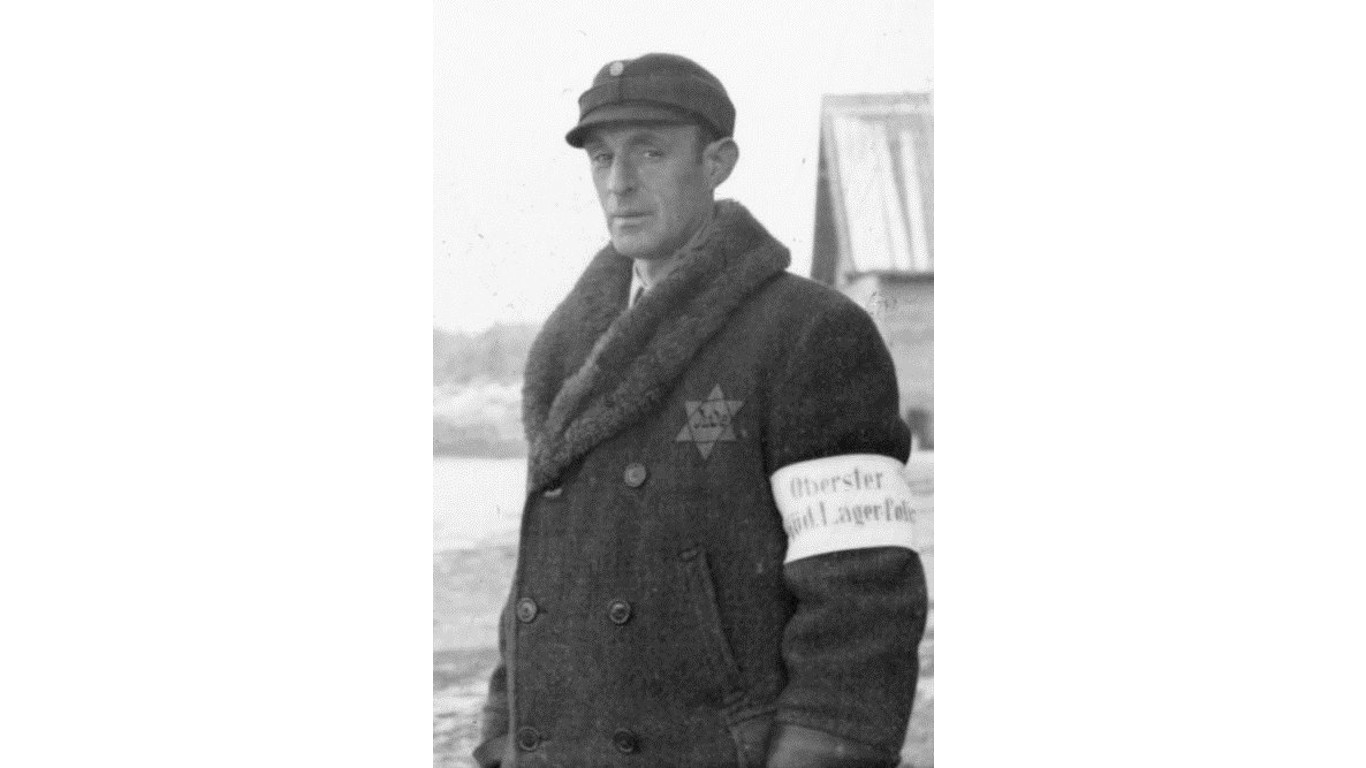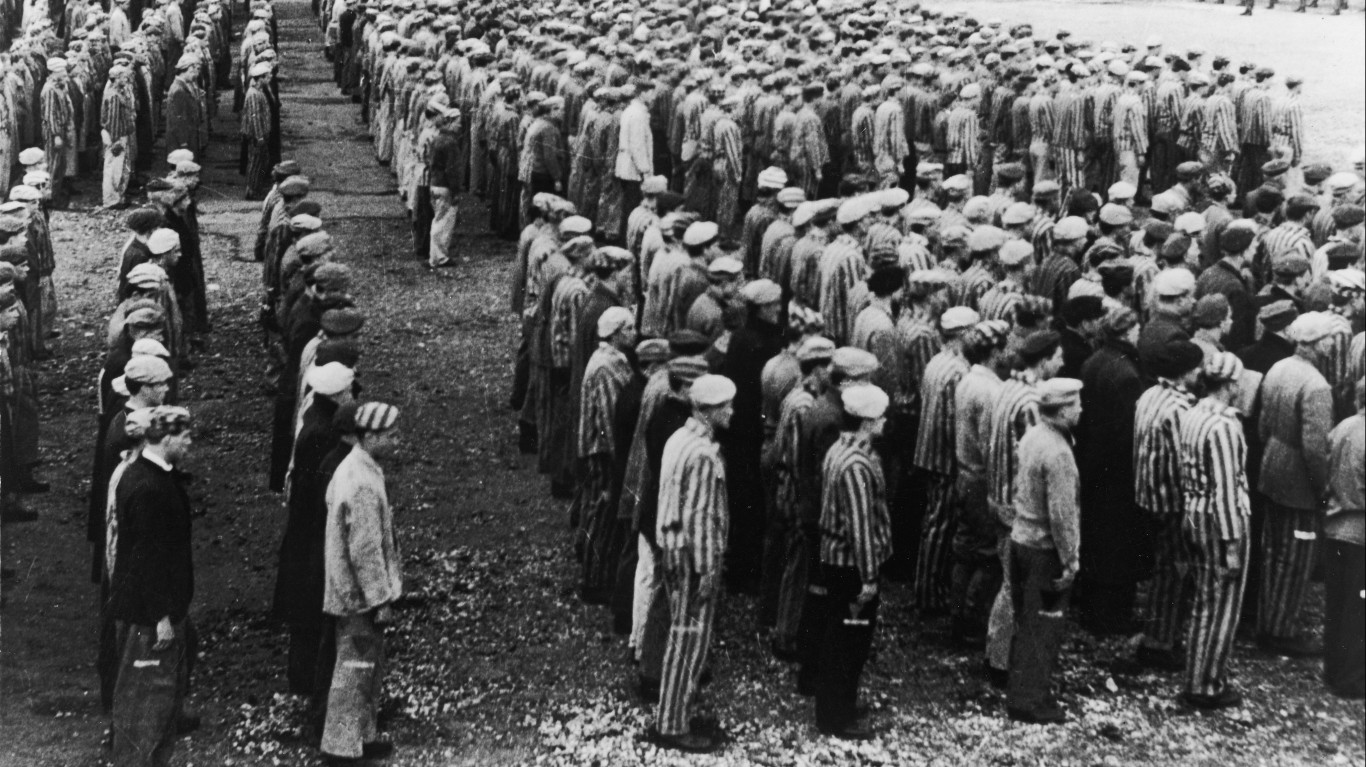
When former U.S. president Donald Trump used an inverted red triangle in campaign ads on Facebook in 2020, it was immediately recognized as a symbol used by the Nazis to designate political prisoners and removed by the social media giant.
Fanatical about the letter of the law and codification in general, the Nazis classified and documented virtually everything under their control. In fact, many of the detailed records on atrocities committed during the Holocaust were documented by the Nazis themselves. (These are 20 horrifying images of Auschwitz.)
The massive population in concentration camps were sorted and labeled using a complex system of symbols as badges. These badges included numerous iterations of the double triangle, which always indicated Jews: The two triangles were laid over one another with the vertices pointing in opposite directions to form an ironic Star of David. (Jews were required to wear a yellow Star of David not just in camps but everywhere throughout most countries under German rule.)
Many other groups were forced to wear symbolic badges, too. They varied in color and combination to classify prisoners by race, nationality, legal status, faith, and sex.
The symbols they devised helped to reinforce Nazi exceptionalism, while also degrading those forced to wear them. How these insignias looked and what they represented reveals the extent of the psychological abuse the Nazis used to dehumanize their victims.
The Jews were the target of the worst dehumanization, and of course constituted the majority of those slaughtered during the Holocaust, but a multitude of others were singled out and slain as well. Of the eleven million massacred during the Holocaust by the Nazis, six million were Jews. The rest included Romani (“Gypsies”), Slavs, members of various faiths, communists, homosexuals, the physically and mentally disabled, those with criminal records, and anyone politically opposing the Nazis or choosing to remain neutral.
To list some of the key symbols used by the Nazis to mark their victims, 24/7 Tempo reviewed numerous online historical sources, including the United States Holocaust Memorial Museum’s Holocaust Encyclopedia, Britannica, History, Smithsonian, and Imperial War Museums, as well as Wikipedia and The Washington Post.
Letter “B”
The Nazis used the letter “B” to mark Belgian prisoners. Belgium is one of the countries that was occupied twice by German forces, in 1914 and 1941. Under the second occupation during WWII, the Nazis murdered more than 40,000 Belgians, over half of them Jews.
[in-text-ad]
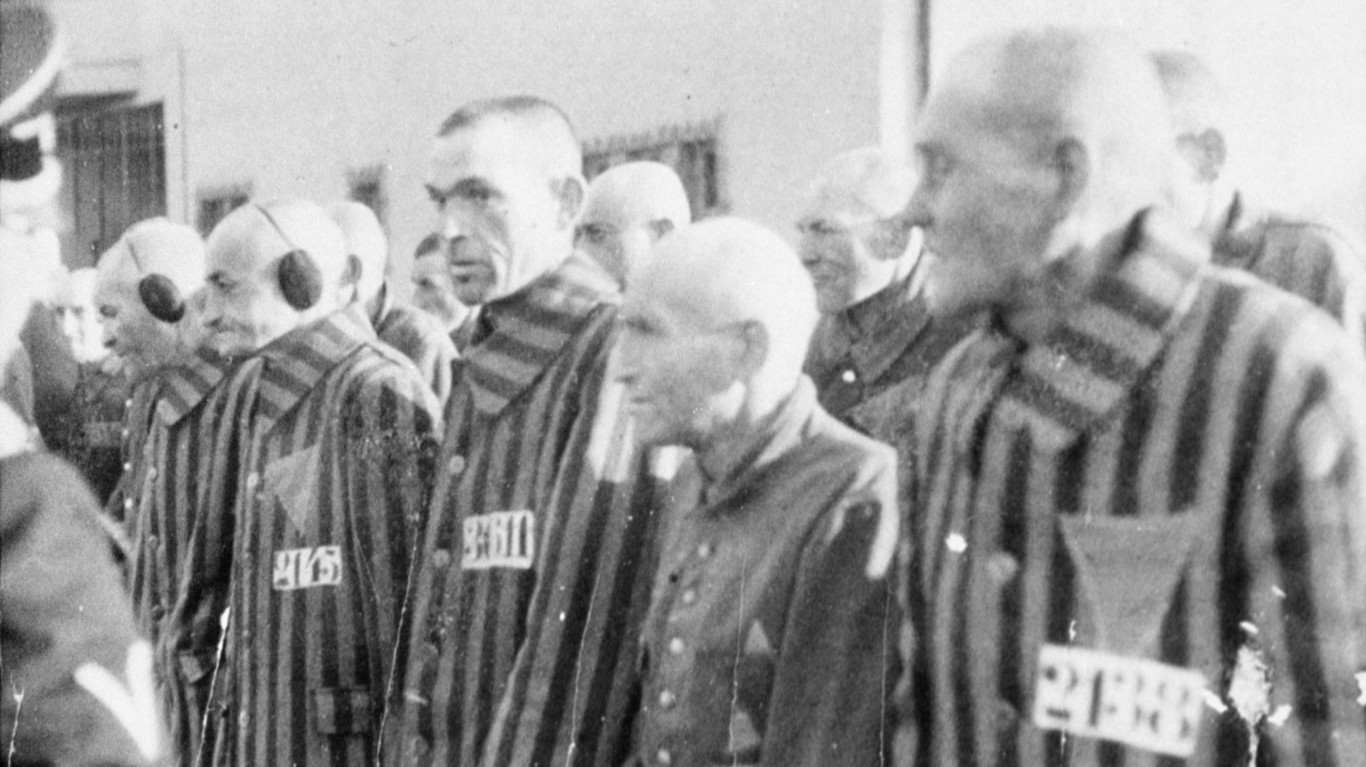
Blue triangle
Asylum seekers in countries controlled by the Nazis or under their influence were labeled with blue inverted triangles and forced into labor.
Green (inverted) triangle and Yellow triangle
The Nazis often used the color green to classify individuals with a criminal record. If a documented criminal was Jewish, he or she was given a green and yellow star.

Letter “P”
Those branded with a “P” were Poles, and included many considered members of the intelligentsia (doctors, teachers, etc.) Educated Poles were viewed by the Nazis as dangerous at the time, and any education counter to Nazi ideology was considered a threat to the “Aryan race.” During the Nazi occupation of Poland between 1939 and 1945, Hitler deployed a targeted strategy termed “exterminating the elites.” In the early years of WWII, some 100,000 Poles were killed as part of the mass-murder program called Intelligenzaktion.
[in-text-ad-2]
Purple triangle
The purple triangle was introduced in July of 1936, for anyone unwilling to align with the Nazi party. While Jehovah’s Witnesses comprised the vast majority of this group because of their faith-based political neutrality and refusal to use the Hitler salute, members of some other pacifist groups were also made to wear the symbol.
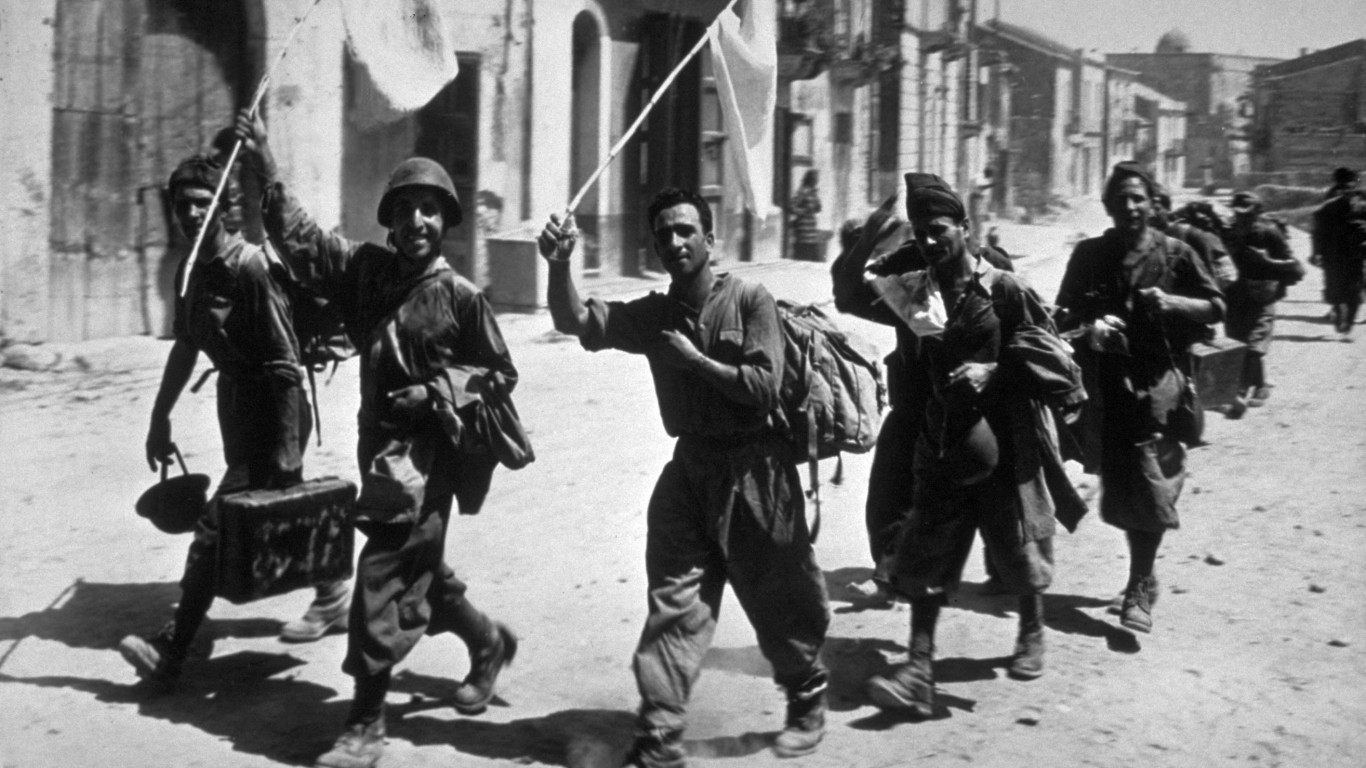
Letter “I”
As one of the three major Axis powers during WWII, Italy greatly assisted in expanding the Nazi regime. Any Italians who resisted falling in line were jailed and given the letter “I” in place of a name. Italy would go on to declare war against its former partner in October of 1943, helping to turn the tide of war.
[in-text-ad]
Letter “Z” next to a black triangle
The letter “Z” adorned the arm bands forcibly given to the Roma (formerly called “Gypsies” – the initial stands for Zigeuner, the German word for the group). When a “Z” combined with the black insignia, it signified that the wearer was a Romani woman. (Male Romani were given a brown triangle.) Members of this group were considered to be fortune tellers, prоstitutes, and other “anti-social” types. Some sources add that lesbians were given the symbol, but no official records verify that theory.
Pink (inverted) triangle and yellow triangle
Gay Jewish men were tagged with a pink inverted triangle over a yellow triangle. Male homosexuality was considered by the Nazis to be a “degenerative” trait.

Letter “N”
Insignias bearing the letter “N” were for people from Norway. The Nordic country maintained a neutral stance with Germany throughout much of the war, until they were occupied in 1940.
[in-text-ad-2]
Inverted Red triangle
An inverted, red triangle was used to identify non-Jewish prisoners of war, including Freemasons, communists, and gentiles who helped Jews. Bold letters were used to designate members of the group by nationality.
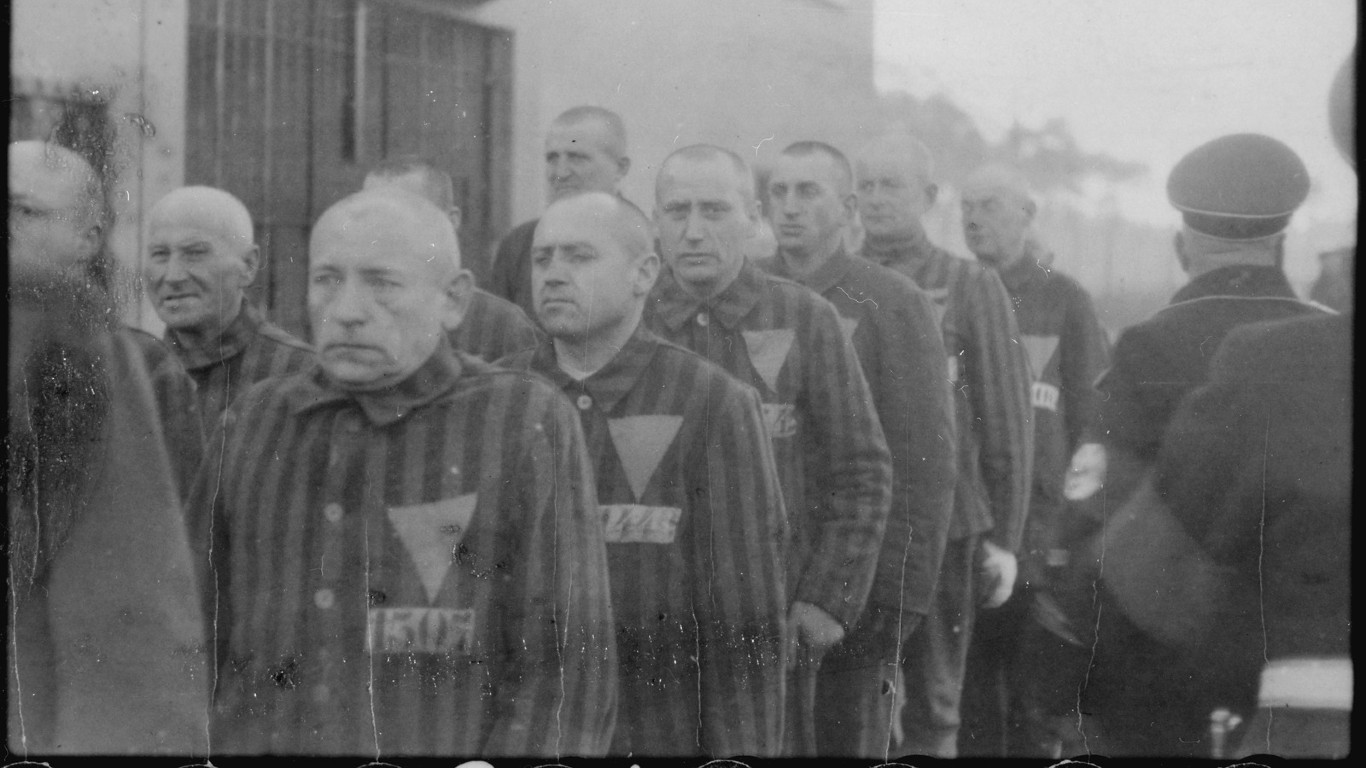
Pink triangle
In 1933, the pink inverted triangle was introduced to label gay men. Male homosexuality was illegal in Germany not just under the Nazis, but from 1871 until as late as 1994. The symbol has since been reclaimed by the LGBTQ+ movement, with the point of the triangle pointing up.
[in-text-ad]

Letter “T”
Under German military occupation, the Czech people were marked with a letter “T” (for “Tscheche,” the German spelling). The Nazi invasion of Czechoslovakia is infamous for its betrayal of the Munich Agreement – the 1938 deal that supposedly staved off war in exchange for Germany’s annexation of Sudetenland, a German-speaking section of the country. The Czechoslovakian government was not allowed to participate in the negotiations.
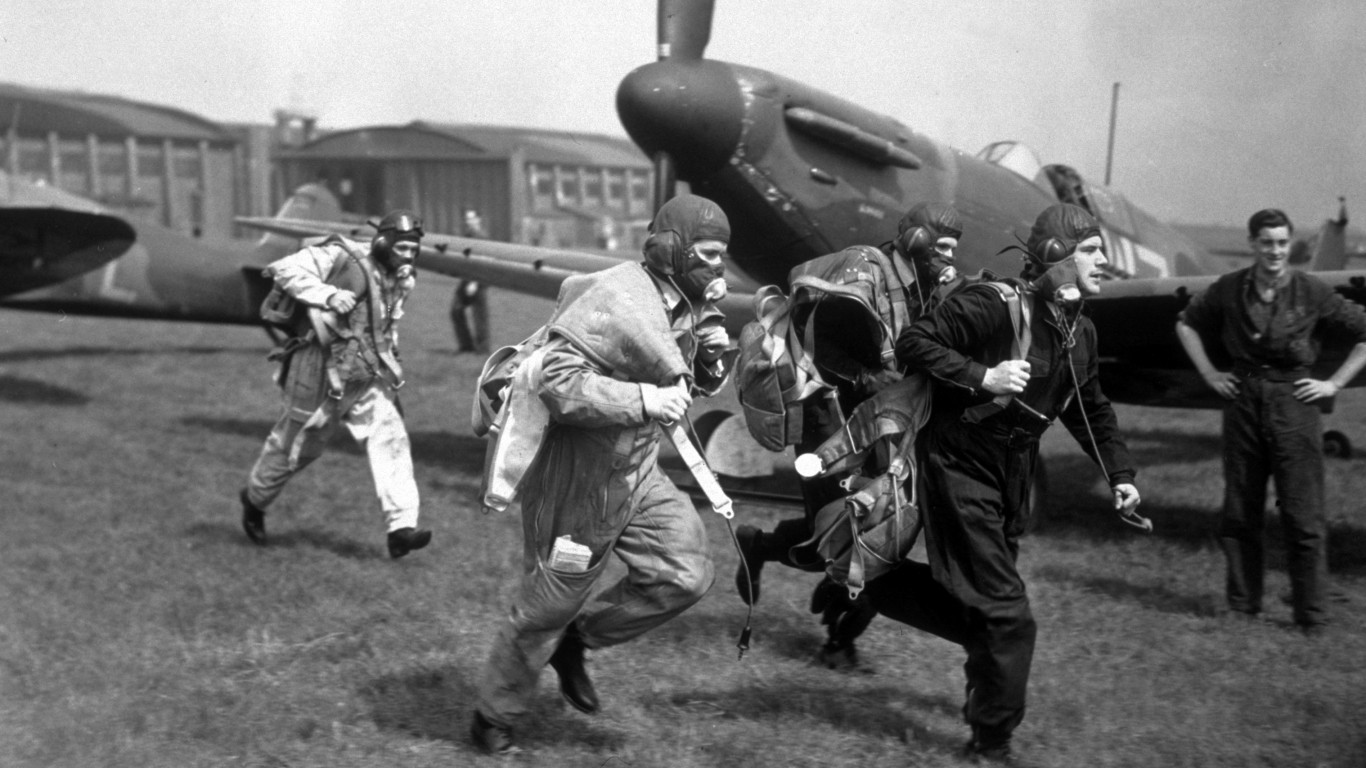
Letter “E”
British forces played a significant role defeating the Nazis. Those who were interned by the German army received a red inverted triangle, with the letter “E” for “Engländer” (used no matter which part of Great Britain the internee was from). Bold letters were used to identify non-Jews by country of origin.
Red (inverted) triangle and yellow triangle
Red inverted triangles were the symbol for all prisoners of war. When this shape was joined with a yellow triangle to form the star badge, it was intended for a Jewish prisoner of war.
[in-text-ad-2]
Black (inverted) triangle and yellow triangle
Same-sex relations were considered an act of the “condemned,” though lesbians in general were not persecuted as severely as male homosexuals. Combined black and yellow stars identified lesbian Jews.

Red triangle
An upright red triangle was for “traitors” accused of providing shelter or escape from the Nazis or for military deserters. No one was allowed to organize against Hitler’s ideology.
[in-text-ad]

Letter “U”
Hungary was an axis power instrumental in constructing and organizing the ghettos, into which Jews were herded within their own territory. Hungarians who resisted the Nazis were imprisoned and labeled with a “U,” after “Ungarn,” German for Hungarian.
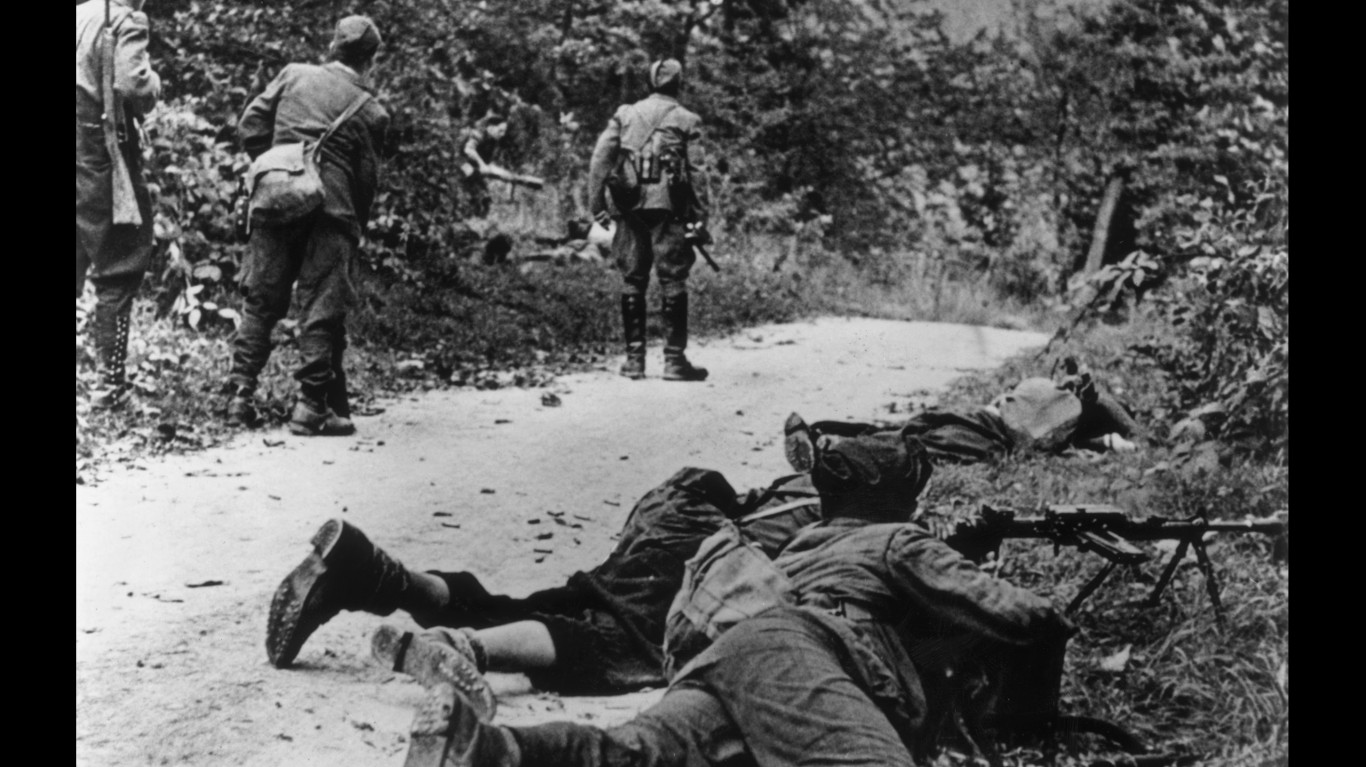
Letter “J”
Axis powers annexed Yugoslavia in 1941. As was the case in Belgium, the Yugoslavs (Jugoslawien in German) were not equipped to fight the economic and military strength of the German army. The captured Yugoslavs received the letter “J”.
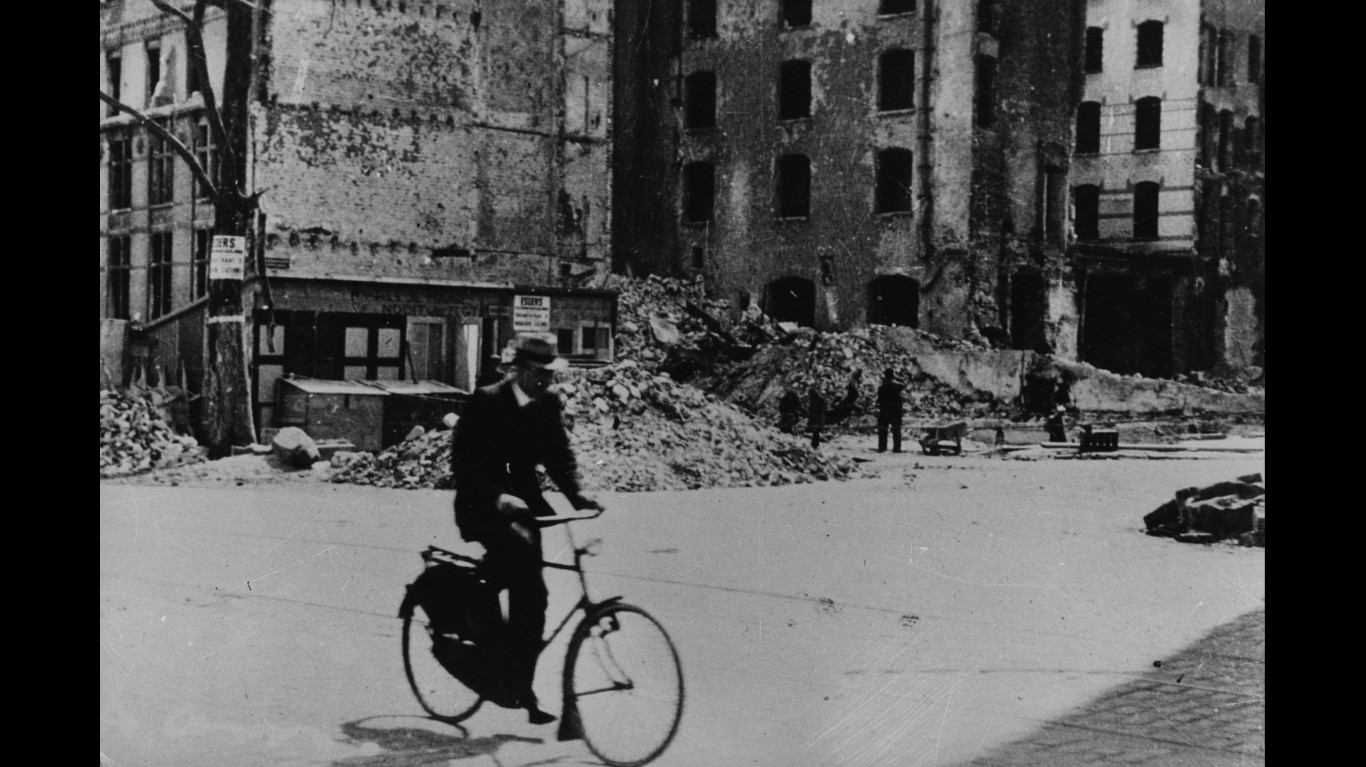
Letter “H”
When the Third Reich seized the Netherlands in 1940, the Dutch took a stance of neutrality to resist the Nazi regime. Hitler forced their surrender with the Rotterdam Blitz, bombing the country by air raid. An insignia with the letter “H” (for Holländer) was used to classify the interned Dutch.
[in-text-ad-2]
Brown triangle
A brown, inverted triangle was used to classify Romani males, with the letter “Z” to display their Zigeuner (“Gypsy”) origins.
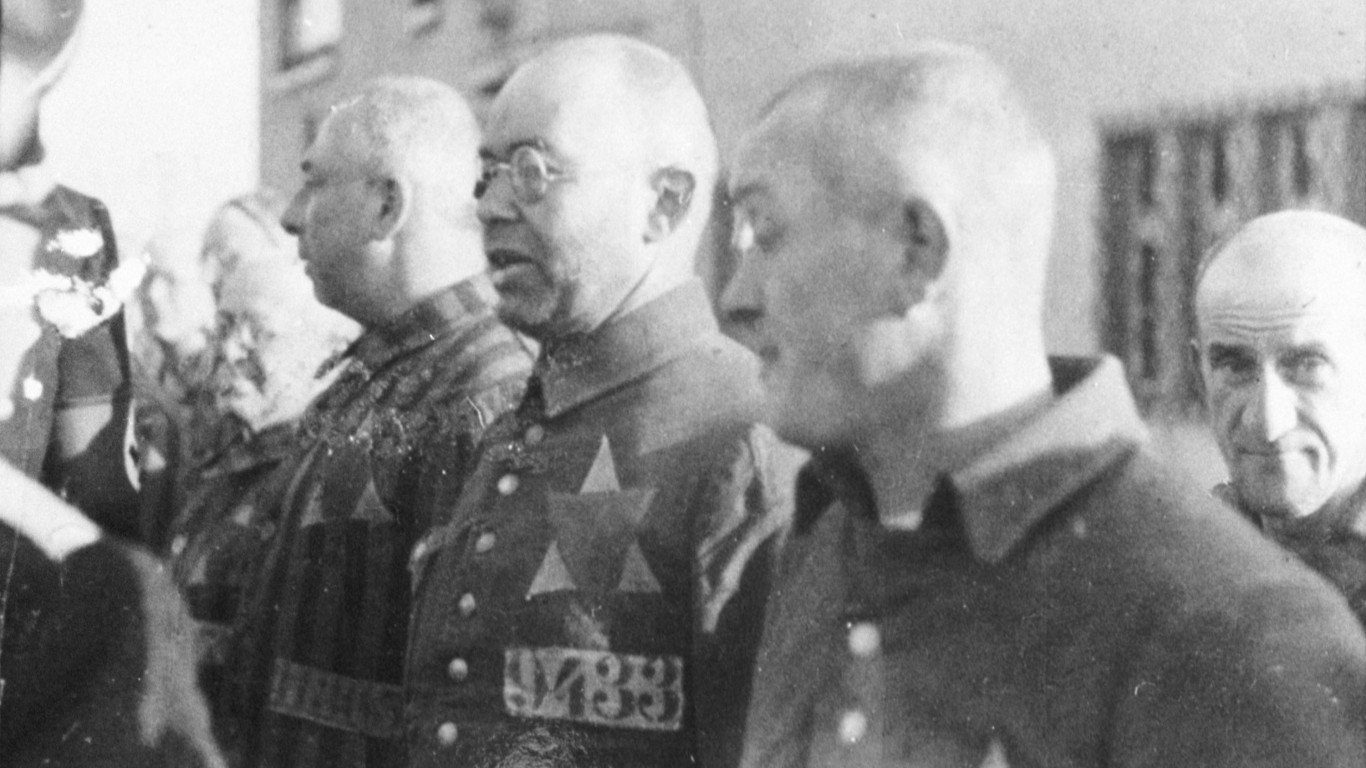
Purple (inverted) triangle and yellow triangle
A purple inverted triangle paired with a yellow triangle was used to classify Jehovah’s Witnesses of Jewish descent. While this combination may seem incoherent, the accuracy of these labels was not critical to the Nazis’ intentions. Badges were often given more symbols with the intention to further dishonor and publicly humiliate inmates by displaying their “vagrancies.”
[in-text-ad]
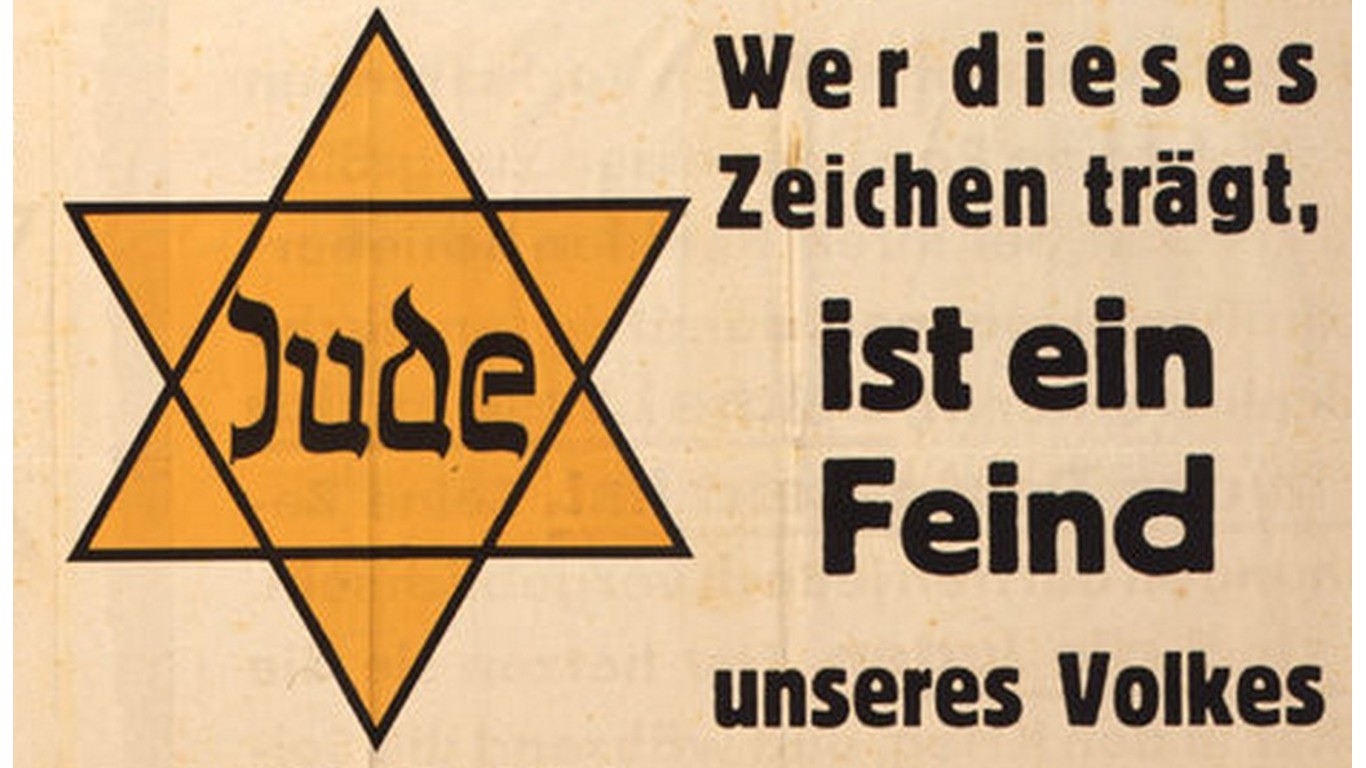
Yellow (inverted) triangle and black triangle
A yellow inverted triangle over a black triangle was the classification for women accused of miscegenation – meaning “interbreeding,” a practice utterly counter to the Nazi values of “Aryan” or “racial purity.”
Green triangle
Those on non-Jewish descent with a criminal history were classified with green inverted triangles. Criminals were frequently invited by the Nazis to become “Kapos” – which promised better food, clothing, and clean water, in exchange for overseeing the forced labor of other inmates.
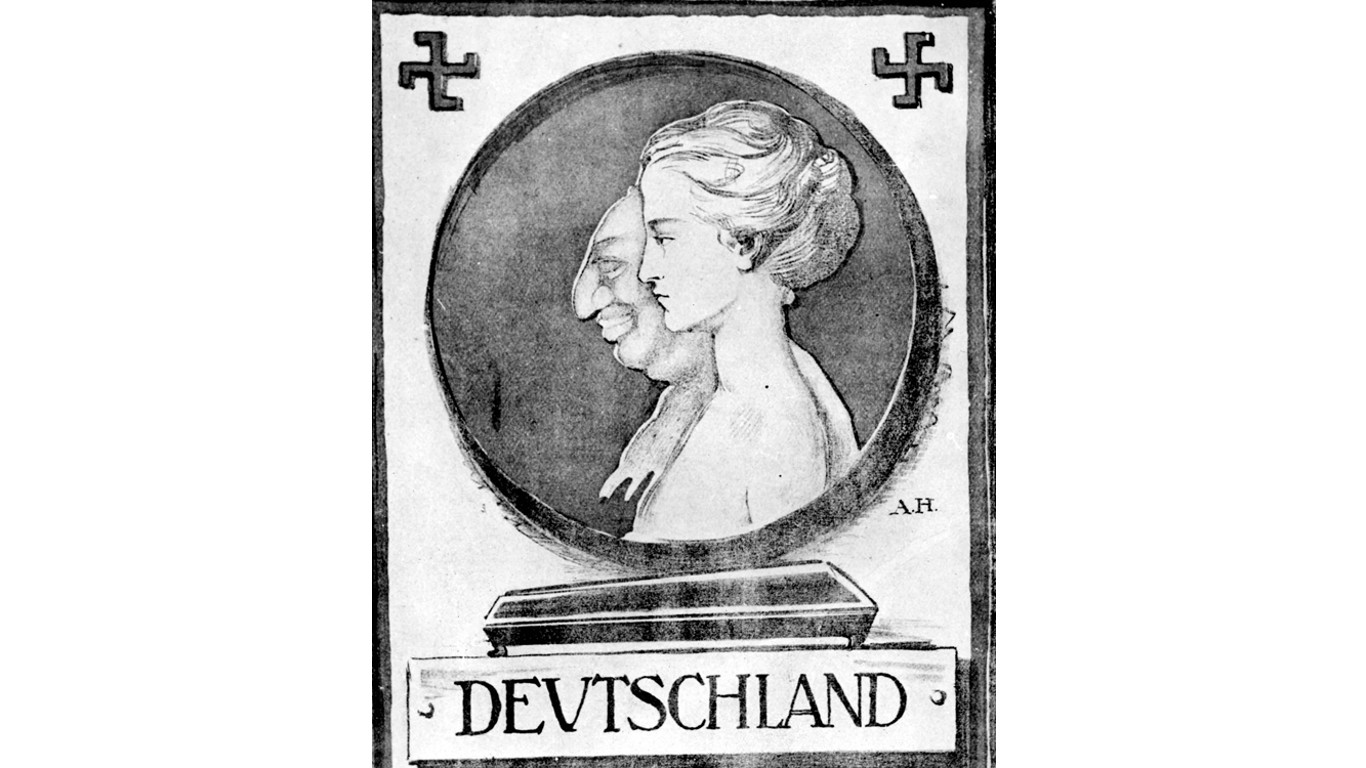
Voided Black (inverted) triangle and yellow triangle
This symbol was used to signify a “race defiler” (“Rassenschänder“) – a Jew who had had sexual relations with a non-Jew.
[in-text-ad-2]

Yellow Badge
The yellow star badge was the standard symbol used to identify and humiliate the Jewish people. It was an appropriation of the Star of David, which Hitler weaponized against the Jews.
Letter “F”
France was invaded by the Germans in 1940. Defeated militarily, the country signed an armistice and established a collaborationist government in the city of Vichy in central France. A storied resistance movement grew up, inflicting serious damage on the occupying forces. The “F” tag was for resistors who were captured and other French who were interned.
[in-text-ad]

Black triangle
The vast majority of those given the black triangle badge were women convicted of resisting childbirth, engaging in sex work, or lesbianism. This group also included anyone deemed “genetically diseased,” such as addicts, the mentally ill, or physically disabled.
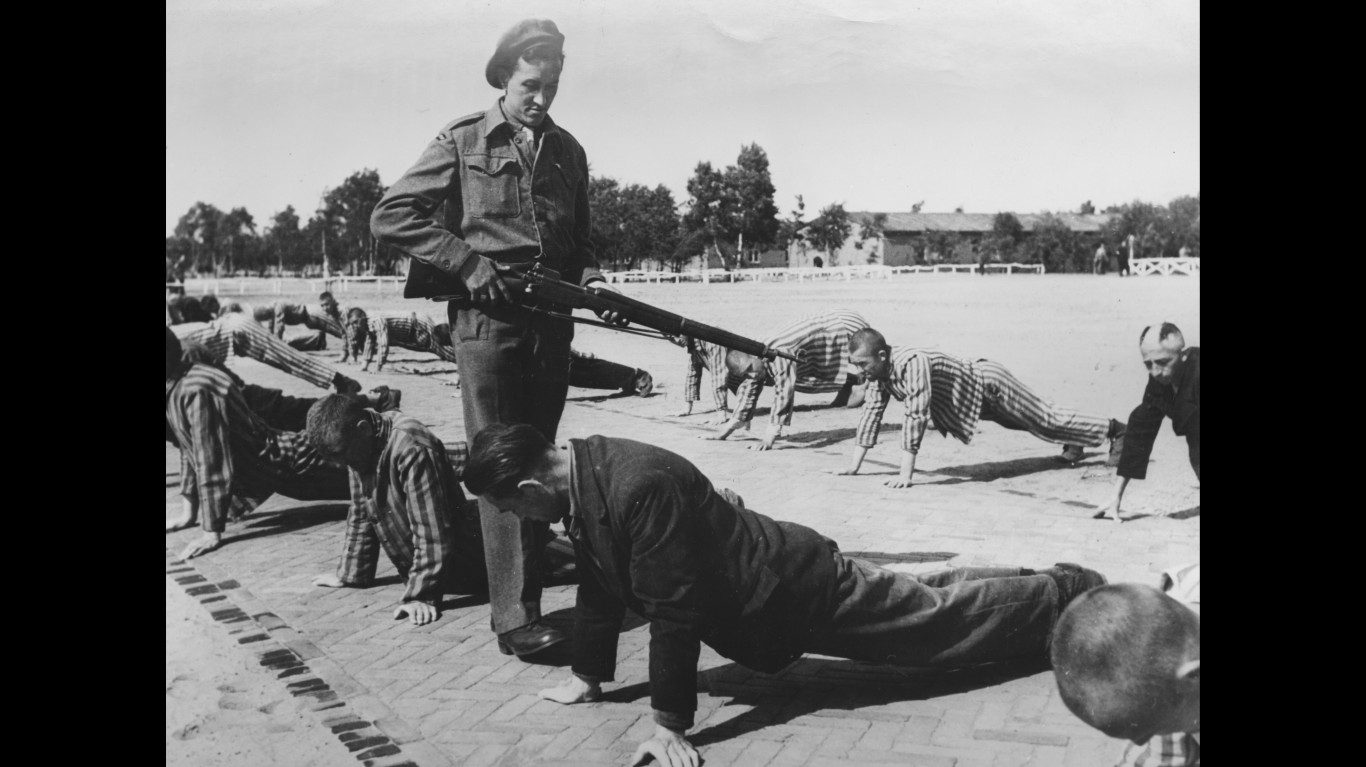
Solid bar
To maintain order in concentration camps, the Nazis created a demerit system. By adding a solid bar to badges for every crime committed while interned, Nazi guards were able to track the offenses of their prisoners. The color of the bar matched the assigned badge. The greater the number of bars, the more severe the punishment.

Circle
If reprimand and torture were not enough to curb rule-breaking, the Nazis assigned inmates to the “punitive unit.” It was a penal work division which often resulted in death. The symbol for members of these forced-work crews was a black and white circle, resembling a bulls-eye.
[in-text-ad-2]
Band
Bands were often added to insignia to identify repeat rule-breakers who, even after receiving severe punishment, continued to rebel. They were forced to work in a prisoner functionary or Funktionshäftlinge. This included the hardest labor without breaks, shelter, food or water, and inmates were forcibly recruited to police others interned.
Is Your Money Earning the Best Possible Rate? (Sponsor)
Let’s face it: If your money is just sitting in a checking account, you’re losing value every single day. With most checking accounts offering little to no interest, the cash you worked so hard to save is gradually being eroded by inflation.
However, by moving that money into a high-yield savings account, you can put your cash to work, growing steadily with little to no effort on your part. In just a few clicks, you can set up a high-yield savings account and start earning interest immediately.
There are plenty of reputable banks and online platforms that offer competitive rates, and many of them come with zero fees and no minimum balance requirements. Click here to see if you’re earning the best possible rate on your money!
Thank you for reading! Have some feedback for us?
Contact the 24/7 Wall St. editorial team.
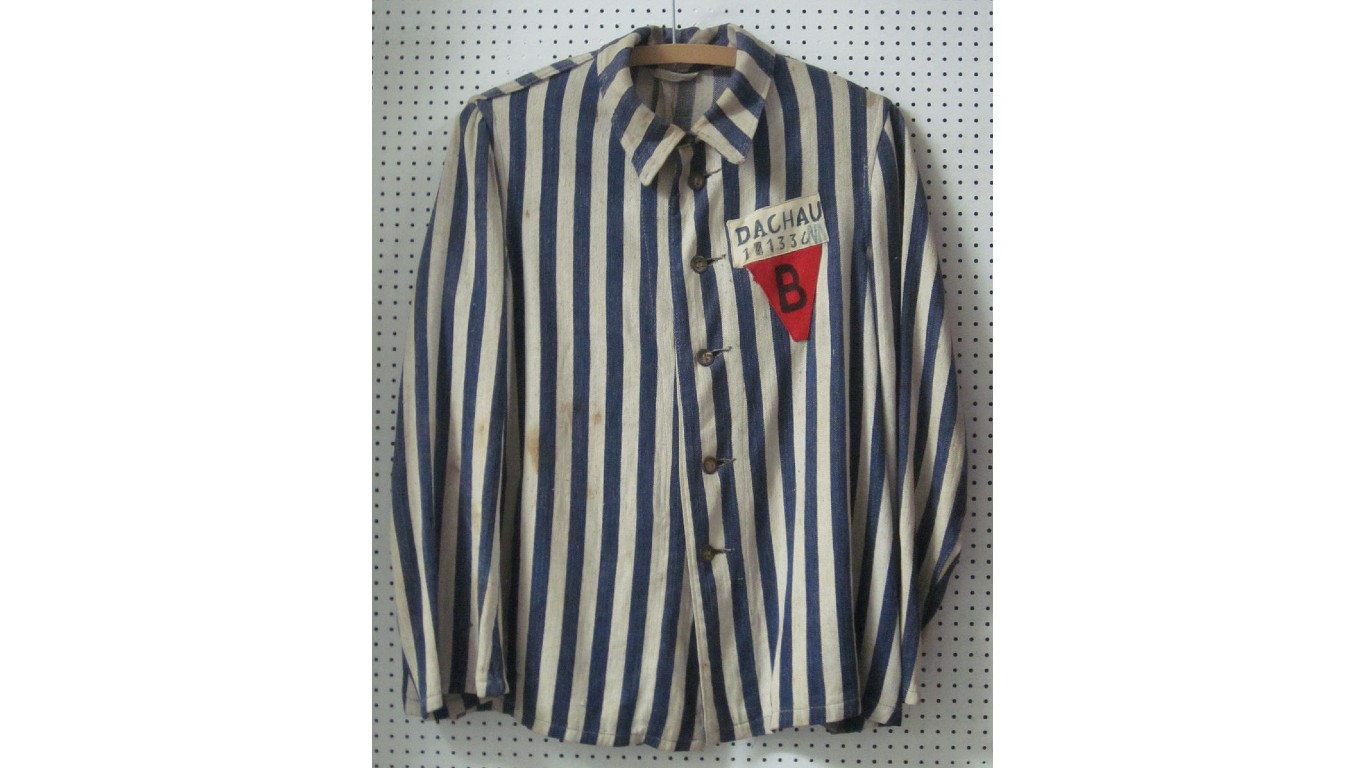
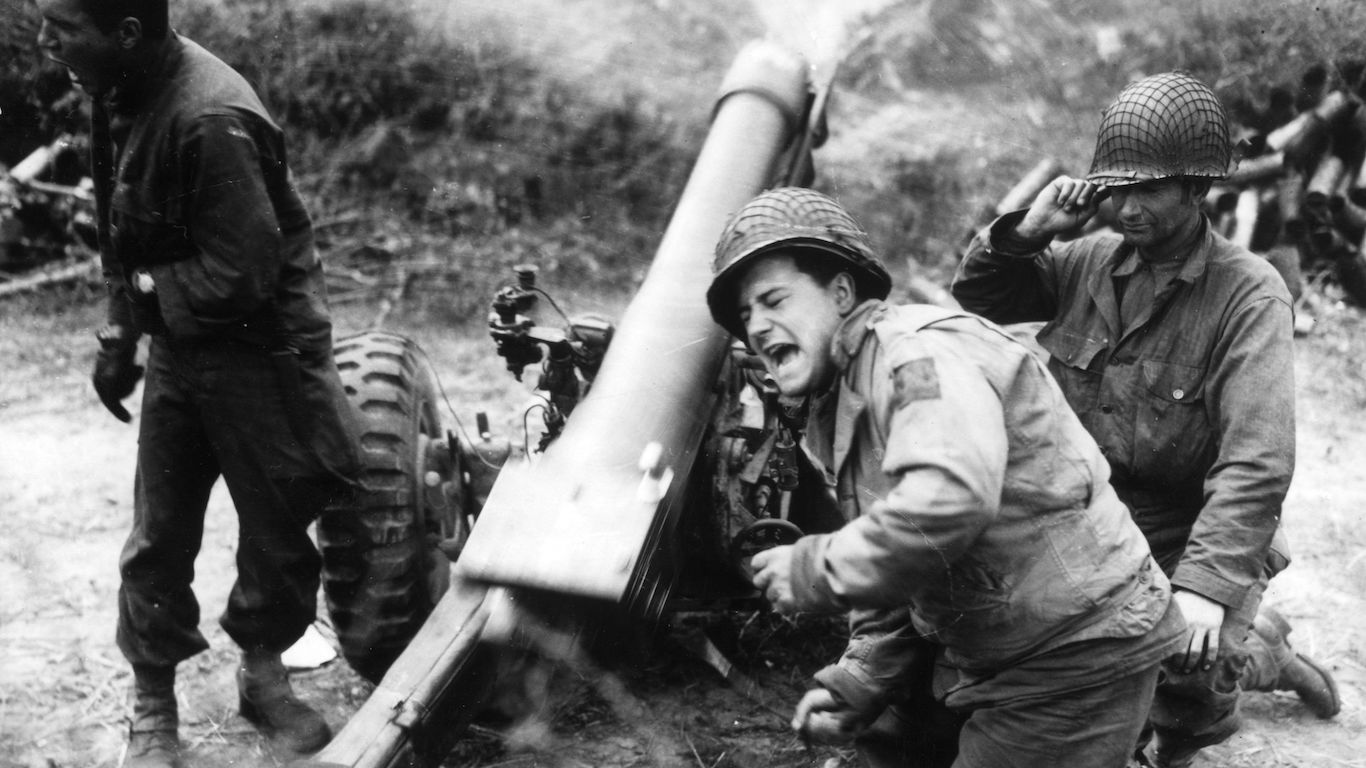 24/7 Wall St.
24/7 Wall St.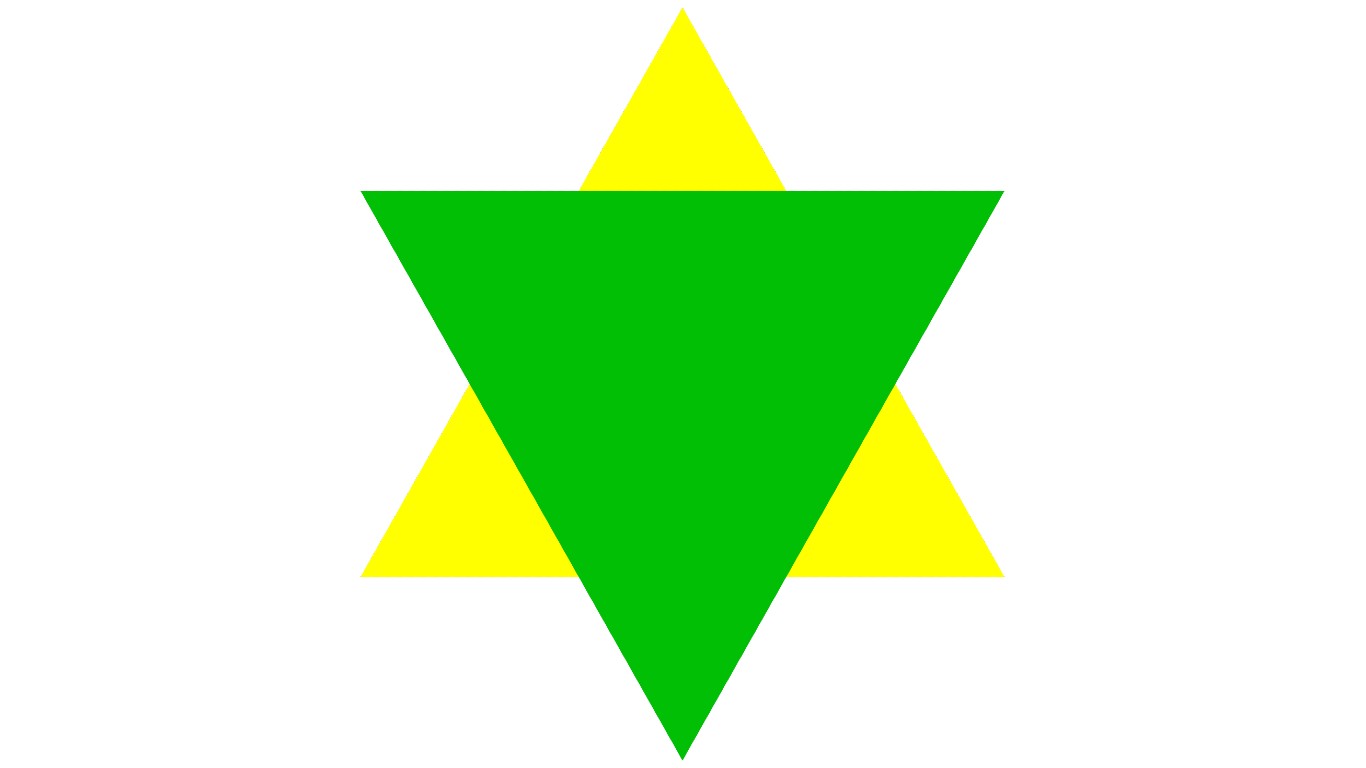
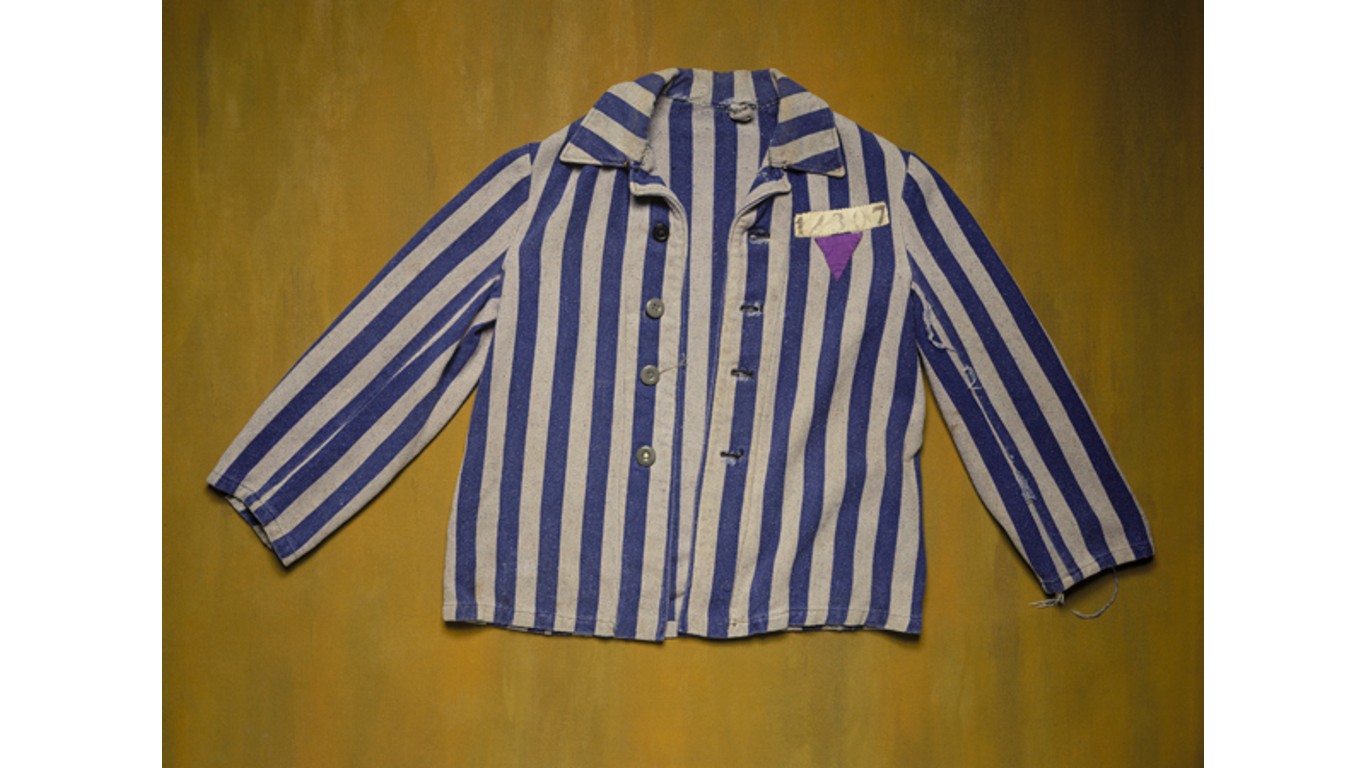
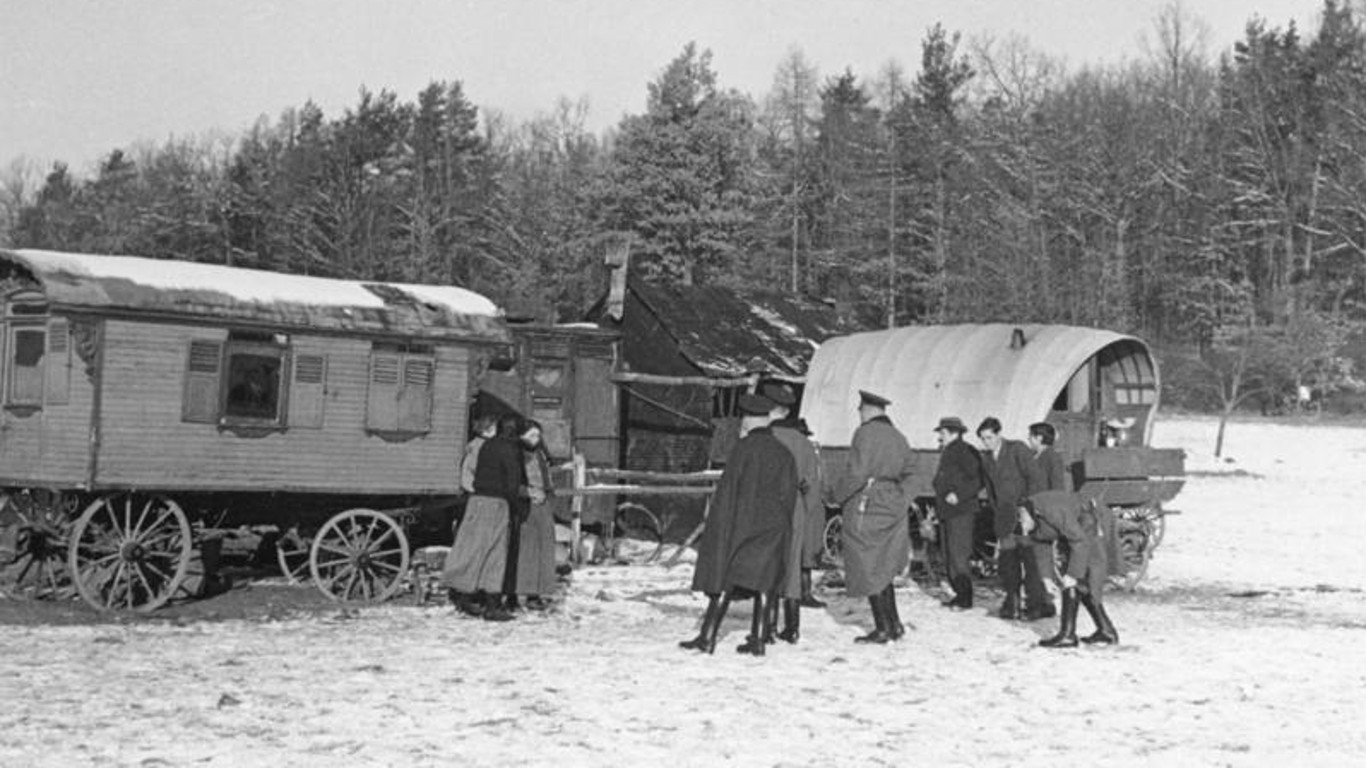
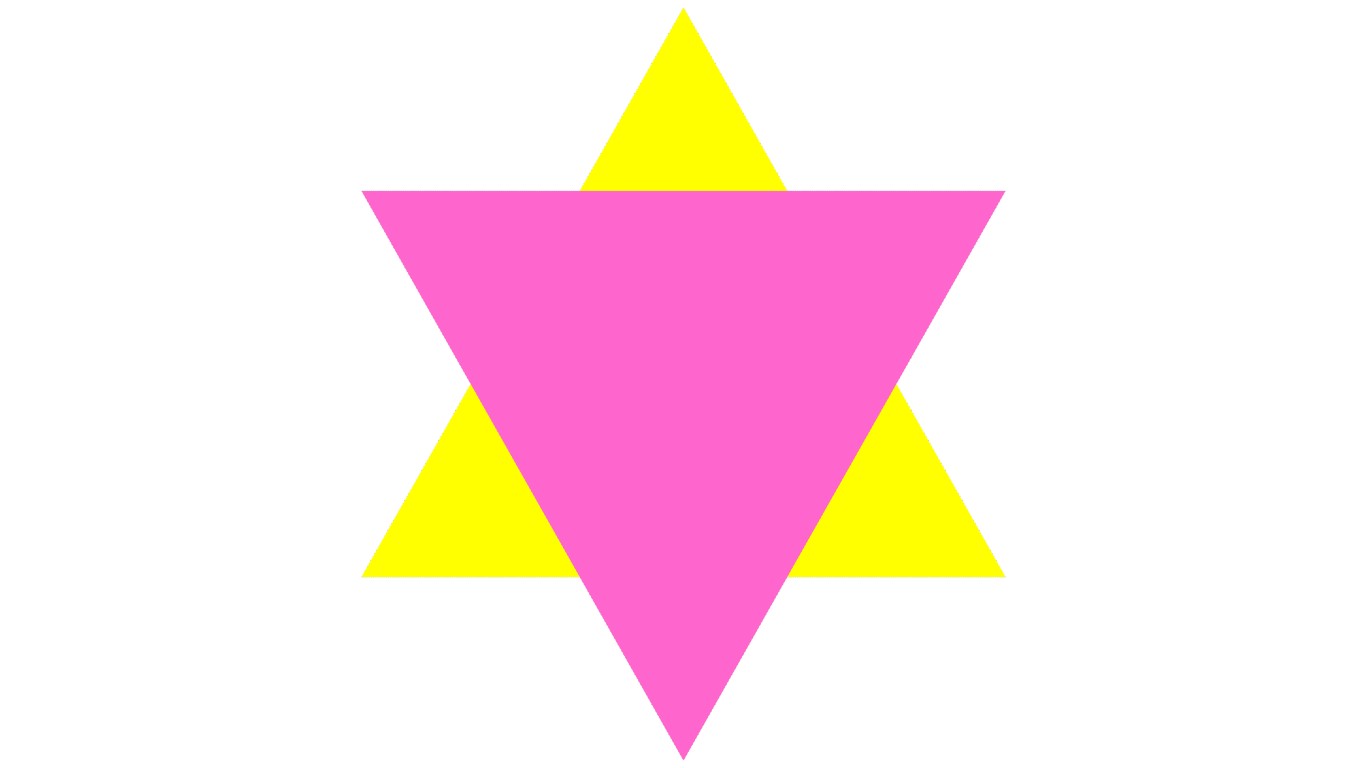
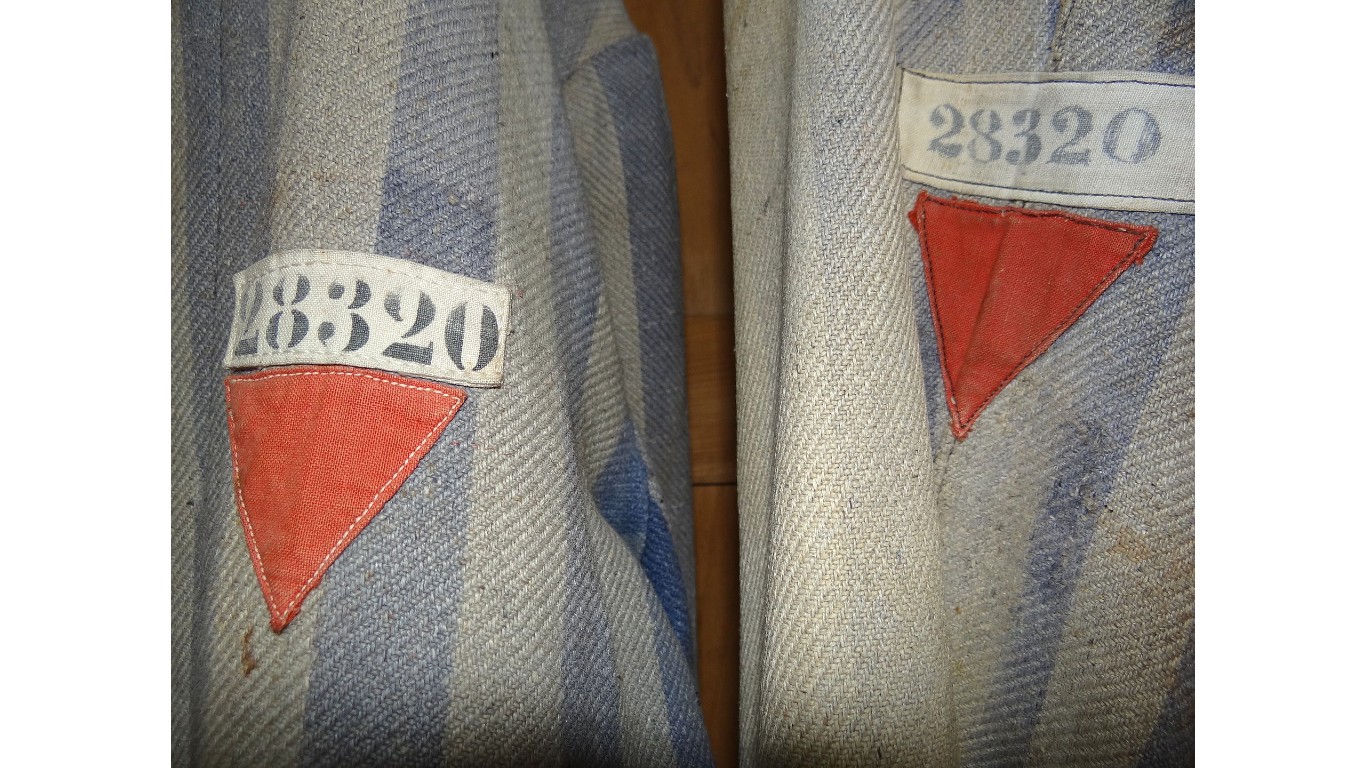
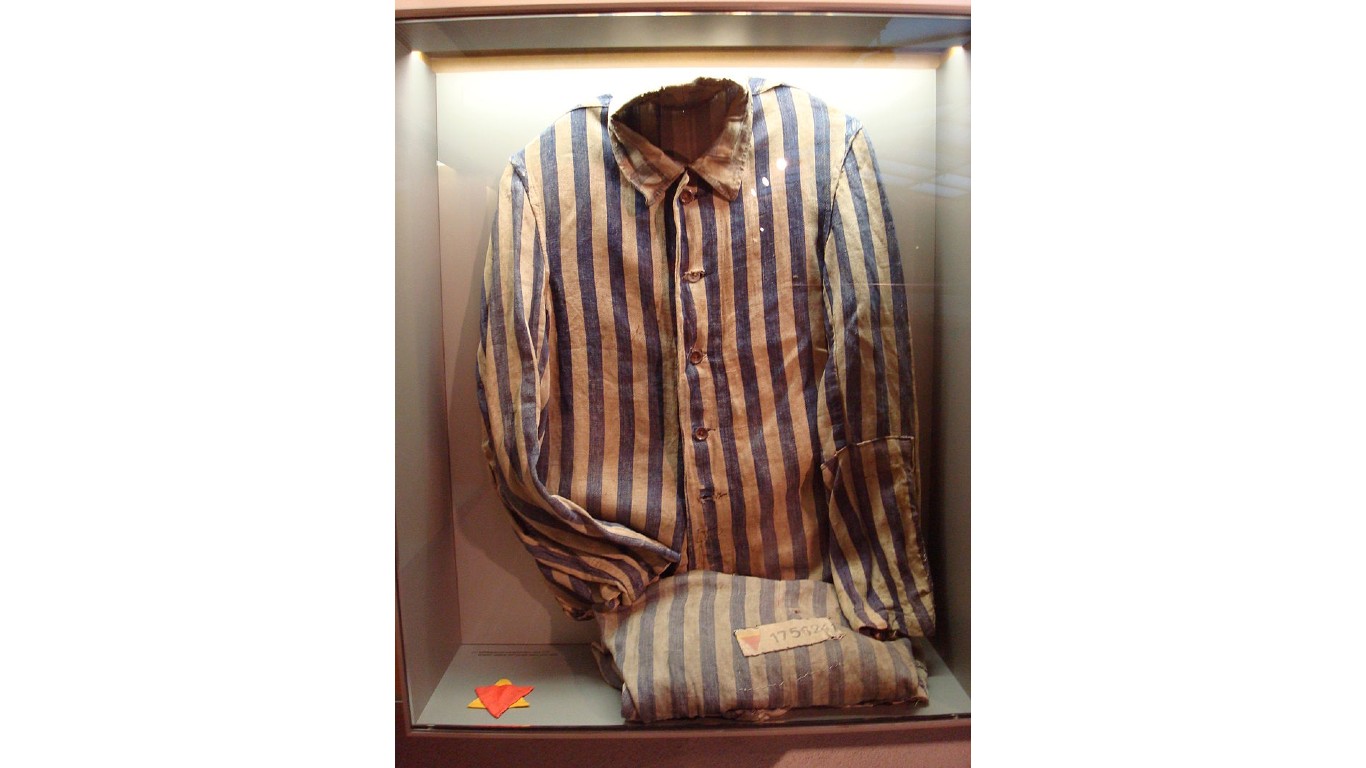
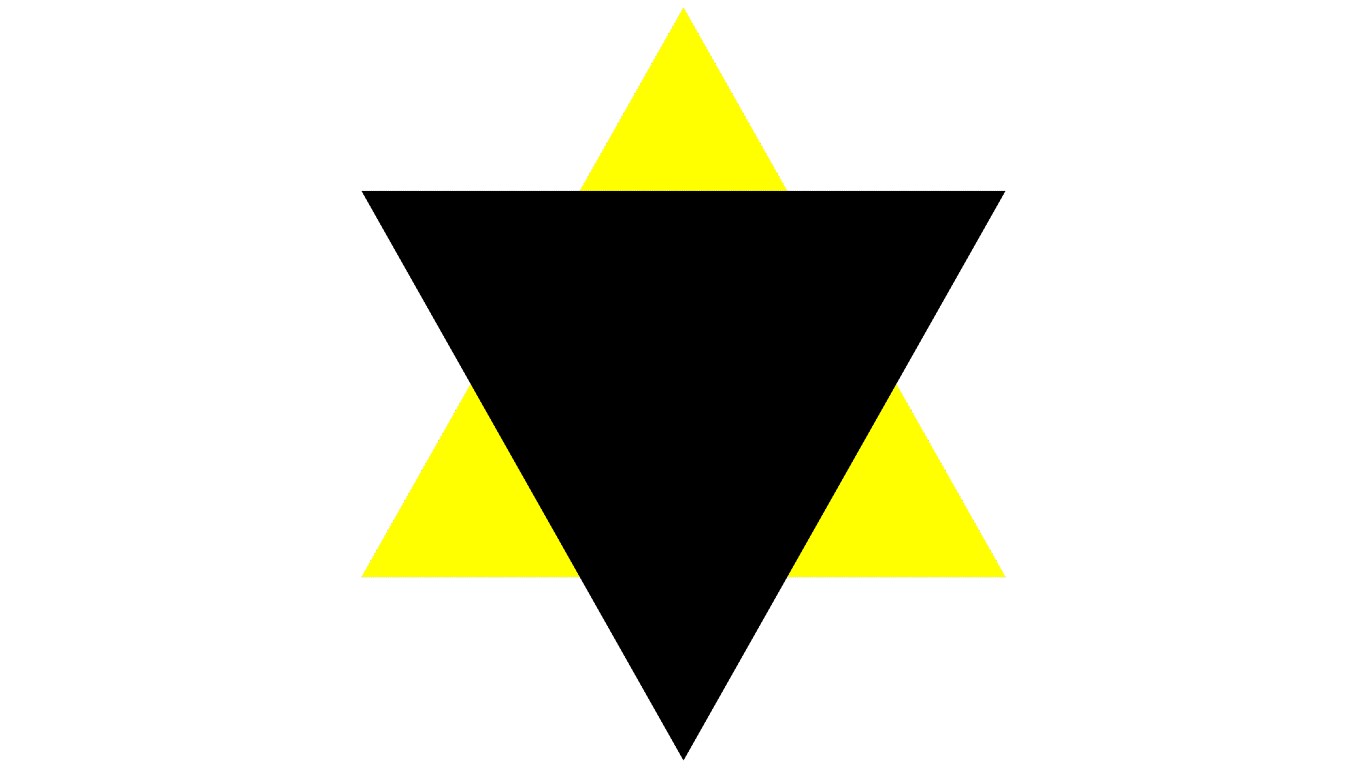

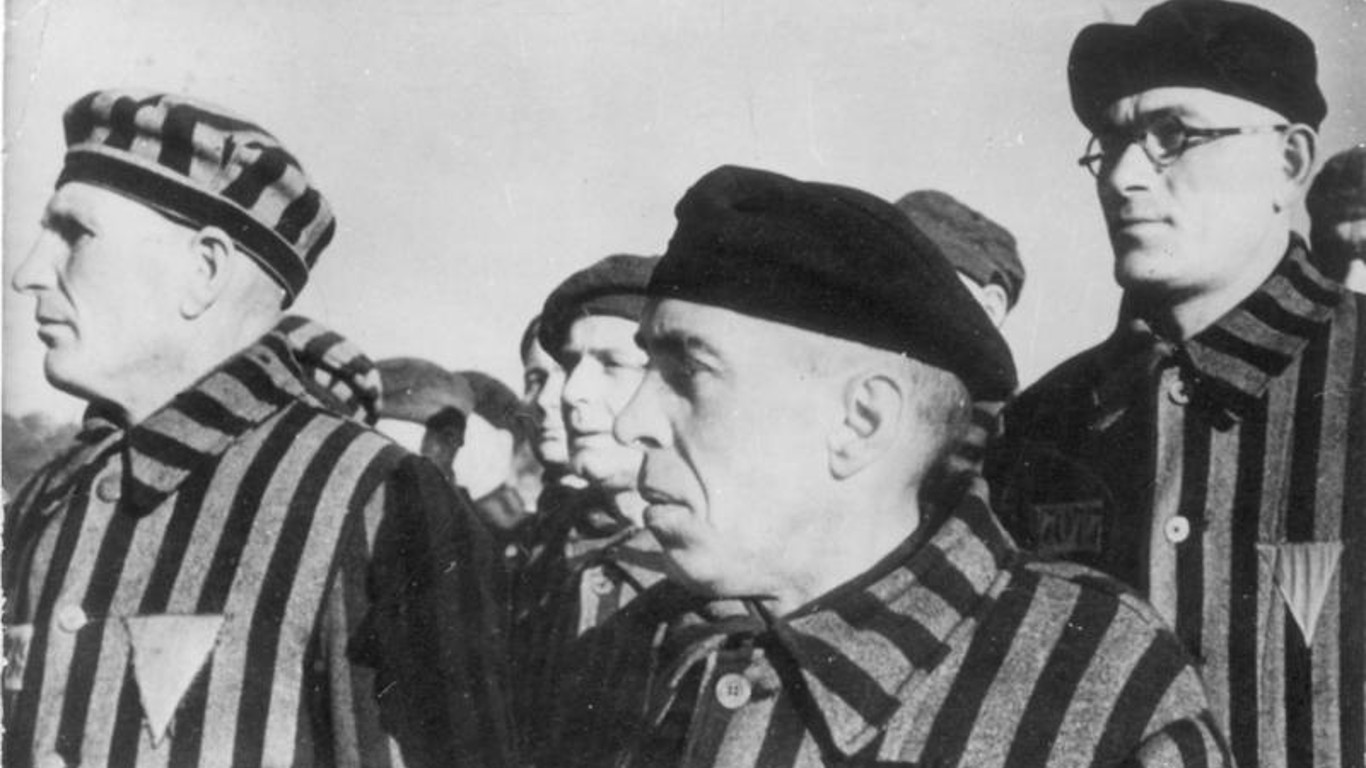

 24/7 Wall St.
24/7 Wall St.